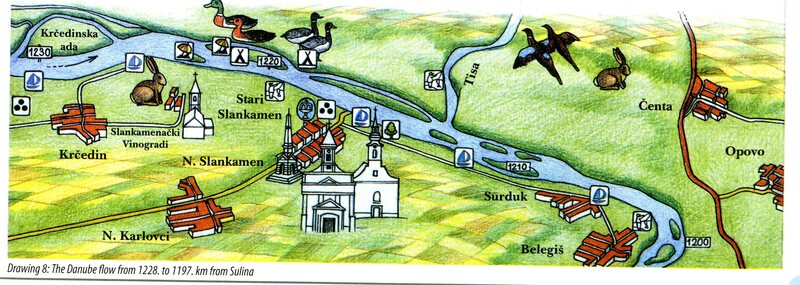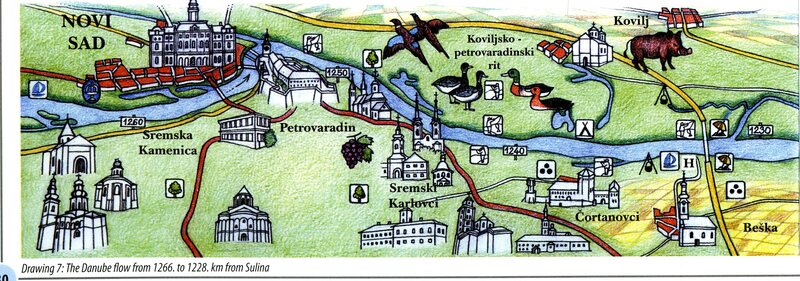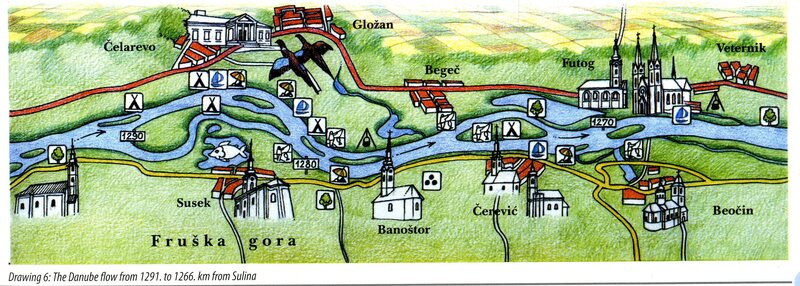The Danube's names through ages

Source: The Unknown Danube : guide through Serbia / Borislav Vasić, Sandra Vojnović, Miro Stefanović ; [translation Jelena Veselinović-Jelić]. - Novi Sad : Tourist Organization of Vojvodina, 2008
The renowned Serbian author and travelogue wriiter Ljuba Nenadović (1826–1895) wrote the following observation in his travelbook Pisma iz Nemačke (Letters from Garmany): “... The Danube is next to its source tiny, weak, any child could jump across it; it is with the support of other rivers that get lost therein that it gains in size and strength. If the Danube were deprived of all those rivers flowing into it under different names, it would grow no bigger than its stream near the source.ˮ
In 1786, 3,000 colonists from Ulm were during a three-month operation transported down the Danube towards Novi Sad.
Within the (Celtic) word DANUV, the Slavs substituted the A in the first syllable with U, while with the Germanic people it mutated. That is reflected in the current forms of the name’s pronunciation and/or spelling.
The river is called DUNAV by the Serbs, Croats, and Bulgarians, and DUNAJ by the Russians, Czrchs, Slovaks and Slovenes. By the Hungarians, the large river is referred to as DUNA, by the Romanians – DUNĂREA and DUNARE, by the Italians – DANUBO; the DANUBE is the name used in English, DANUBE in French, DONAU in German, by the German and Austrians, while the Turks refer to it as TUNA.
Images

Source: The Unknown Danube : guide through Serbia / Borislav Vasić, Sandra Vojnović, Miro Stefanović ; [translation Jelena Veselinović-Jelić]. - Novi Sad : Tourist Organization of Vojvodina, 2008

Source: The Unknown Danube : guide through Serbia / Borislav Vasić, Sandra Vojnović, Miro Stefanović ; [translation Jelena Veselinović-Jelić]. - Novi Sad : Tourist Organization of Vojvodina, 2008

Source: The Unknown Danube : guide through Serbia / Borislav Vasić, Sandra Vojnović, Miro Stefanović ; [translation Jelena Veselinović-Jelić]. - Novi Sad : Tourist Organization of Vojvodina, 2008